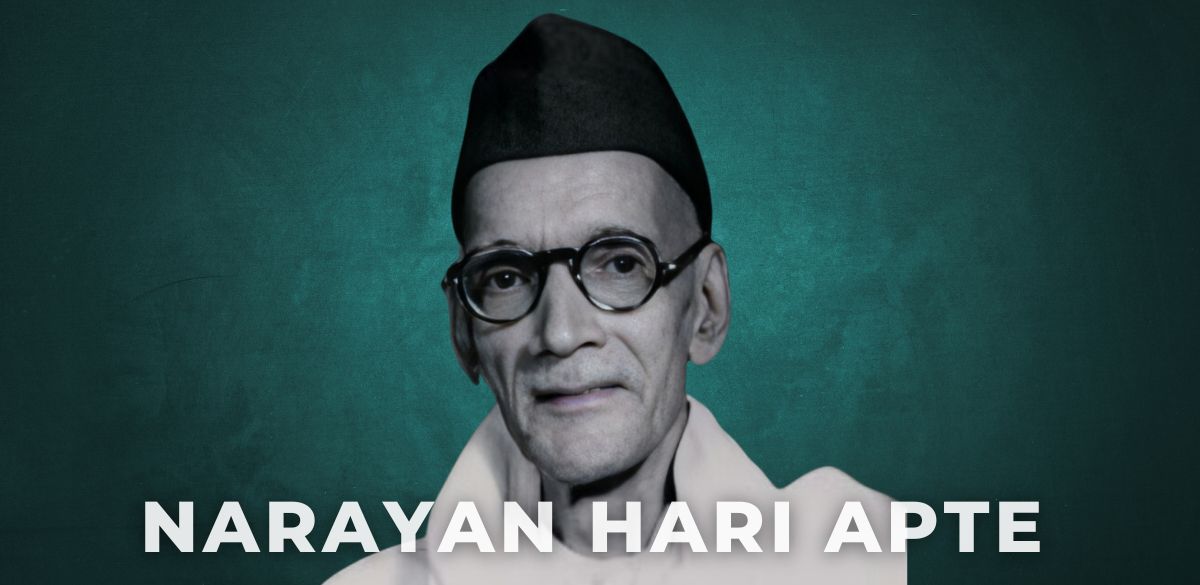Narayan Hari Apte, more fondly known as Nanasaheb Apte, was a beacon of literary brilliance in Maharashtra. His life, which began on July 11, 1889, in the village of Samdoli in Sangli District, was a testament to the power of words and the fervour of patriotism. His significant contributions to Indian literature and the freedom movement are a testament to his intellectual prowess and unwavering commitment.
Table of Contents
Early Life and Education
Nanasaheb Apte’s early education began in the villages of Samdoli and Satara. He was progressing to the New English School in Satara for his high school studies. At 15, Apte left home in 1904 to be a part of Vinayak Damodar Savarkar’s Abhinav Bharat Society, driven by a passion to contribute to India’s freedom struggle. This phase of his life was crucial for his political awakening and his literary development. Influenced by the esteemed writer Hari Narayan Apte and the social reform movement of 19th-century Maharashtra, Nanashaeb Apte crafted stories that delved into historical and social themes reflective of the Marathi Middle Class.
Broadening Horizons
Nanasaheb Apte’s travels across North India (before partition 1905) and Nepal honed his linguistic skills and cultural understanding. His sojourn in Jaipur, where he taught at a school run by freedom fighter Arjunlal Sethi, was particularly impactful. Apte’s return to Satara in 1913 marked the start of his collaboration with Dattātraya Baḷavanta Pārasanīs on translating historical Marathi documents into English and standard Marathi. THis work laid the foundation for his future literary career.
Literary and Political Endeavors
In 1932, Nanasahed Apte met K.B.Hedgewar, the founder of Rashtriya Swayamsevak Sangh (RSS), during Hedgewar’s visit to Aundh state. Despite RSS’s stance, Apte actively participated in the 1942 Quit India Movement, showcasing his unwavering commitment and sacrifice for India’s freedom struggle.
Apte wrote numerous advice books promoting happy family life and published two short story collections reflecting traditional Hindu values and beliefs. His first short story appeared in Karamanuk magazine, and his debut novel, Ajinkyatara, was released in 1909. His literary journey culminated with his last book, Javanancha Jiwandharma, in 1962.
Nanasaheb Apte’s career was diverse and prolific, showcasing his innovative spirit. As a co-editor of Kirloskar Khabar, he gained valuable editorial experience. In 1913, he founded the book publishing house Ajinkyatara Pustkalay, followed by the journals Alhad in 1915 and Madhukar. He established the printing press Shriniwas Mudranalay in 1920 and the publishing house Apte & Co in 1924.
Contribution to Marathi Cinema
Nanasaheb Apte’s foray into the Marathi film industry was done by Baburao Painter in 1922. He adapted many short stories and novels into screenplays for these films. Collaborating with esteemed directors and his association with Prabhat Film Company and director V Shantaram in the 1930s marked the pinnacle of his cinematic career.
Later Years and Legacy
Nanasaheb Apte spent the later years of his life in literary activity, and in celebrating his 80th birthday in Koregaon, various poets and writers from Pune attended. His home became a sanctuary for struggling artists, including the legendary filmmaker Dadasaheb Phalke, who found solace with Apte’s family during difficult times.
Nanasaheb Apte’s legacy is that of a multifaceted individual who effortlessly blended his literary prowess with a deep sense of social and patriotic responsibility. His works continue to inspire and reflect the spirit of Maharashtra’s cultural and historical heritage.
The post Nanasaheb Apte: The Literary Luminary of Maharashtra appeared first on The Talented Indian.
